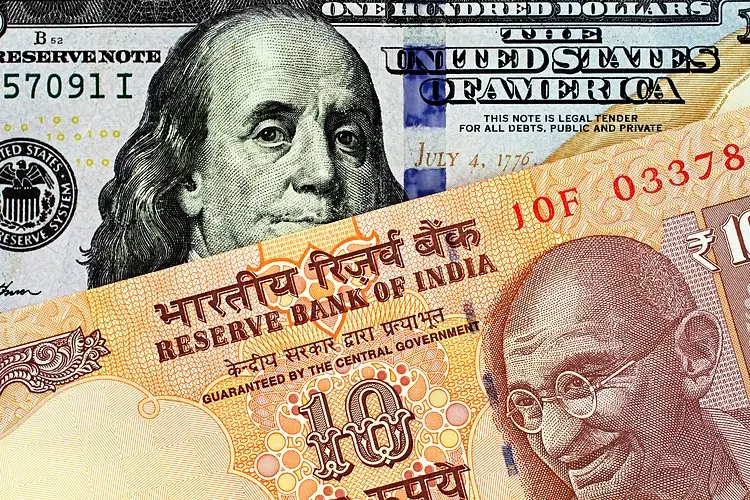The Indian Rupee (INR) continues its downtrend as geopolitical tensions escalate, particularly in the wake of recent developments surrounding Donald Trump’s electoral victory, which has sparked significant market volatility. As traders and economists keenly observe these changes, the INR is feeling the strain from sustained portfolio outflows and the reactive nature of global markets. The Reserve Bank of India (RBI) is expected to actively participate in stabilizing the currency, with interventions anticipated as market conditions continue to evolve.
This ongoing decline is underscored by heightened scrutiny of external factors that affect the currency’s stability. Market participants are bracing for important U.S. economic data, including initial jobless claims and various indices that could sway currency values later today. Amidst this uncertainty, the local currency’s depreciation raises concerns among investors and policymakers alike.
Global geopolitical strife plays a pivotal role in influencing investor sentiment and, by extension, the strength of the INR. The increasing tensions create a perception of risk in emerging markets, leading to a flight of capital towards safer havens. This trend can undermine the INR’s position in the global marketplace, especially given the current economic climate. Furthermore, Trump’s trade policies remain a source of uncertainty, complicating the landscape for international trade, which is vital for India’s economy.
Back at home, the RBI’s monthly bulletin suggests optimism regarding the country’s economic growth, projecting a rise in GDP growth for the current quarter. This indicates that while the INR faces challenges, the underlying economic fundamentals may be shifting positively, which could enhance investor confidence in the long run.
The Reserve Bank of India is not expected to stand idly by as the rupee faces these pressures. Active interventions in the foreign exchange markets are likely to mitigate volatility and curb excessive depreciation. Historically, the RBI has stepped in during critical periods to bolster the currency, providing USD liquidity through state-run banks. Such measures are intended to restore stability, promote trade, and prevent inflation from spiraling out of control.
Technical analysis indicates that the USD/INR pair is maintaining a bullish trend, holding above significant support levels. The current market dynamics are illustrated by the Relative Strength Index (RSI), which hovers around 66.70, signaling potential upward momentum. However, traders are closely monitoring pivotal levels; a breach above the 84.45 mark could propel the pair towards the 85.00 psychological level, whereas failure to hold above 84.35 may suggest further declines.
Macroeconomic Factors at Play
The Indian Rupee is acutely sensitive to a range of macroeconomic variables, including inflation rates, interest rates, and foreign investment flows. Given India’s reliance on imported oil, fluctuations in crude oil prices also have significant implications for the currency. A recurring theme in the rupee’s performance is the balance of trade dynamics; a narrowing trade deficit tends to strengthen the INR by increasing demand for the currency.
Furthermore, the RBI’s monetary policy is pivotal in shaping the rupee’s trajectory. By adjusting interest rates in response to inflation, the central bank influences investor behavior. Higher interest rates typically attract foreign investments, leading to greater demand for the currency, while lower rates may yield the opposite effect.
Inflation remains a double-edged sword for the INR. On one hand, elevated inflation pressures can decrease purchasing power, complicate exports, and generate a climate of uncertainty that deters investment. Conversely, the RBI may respond to rising inflation with rate hikes, enhancing the rupee’s appeal to global investors. This intricate balance underscores the need for a carefully calibrated monetary policy strategy.
The current investment climate in India is crucial, especially in light of the potential benefits stemming from a more robust economic outlook. Should growth prospects improve, inflows of Foreign Direct Investment (FDI) could rise, bolstering the INR. In contrast, persistent inflation or unfavorable comparisons to peer economies could hamper these prospects, leading to a net outflow of capital.
Navigating the complexities facing the Indian Rupee necessitates a comprehensive assessment of both domestic and international factors. While the current challenges cannot be overlooked, there lies a potential for recovery driven by positive economic indicators and proactive monetary policy. As traders and economists digest upcoming U.S. data points and central bank communications, the importance of strategic intervention and macroeconomic management will determine the resilience of the INR in the turbulent waters ahead.

